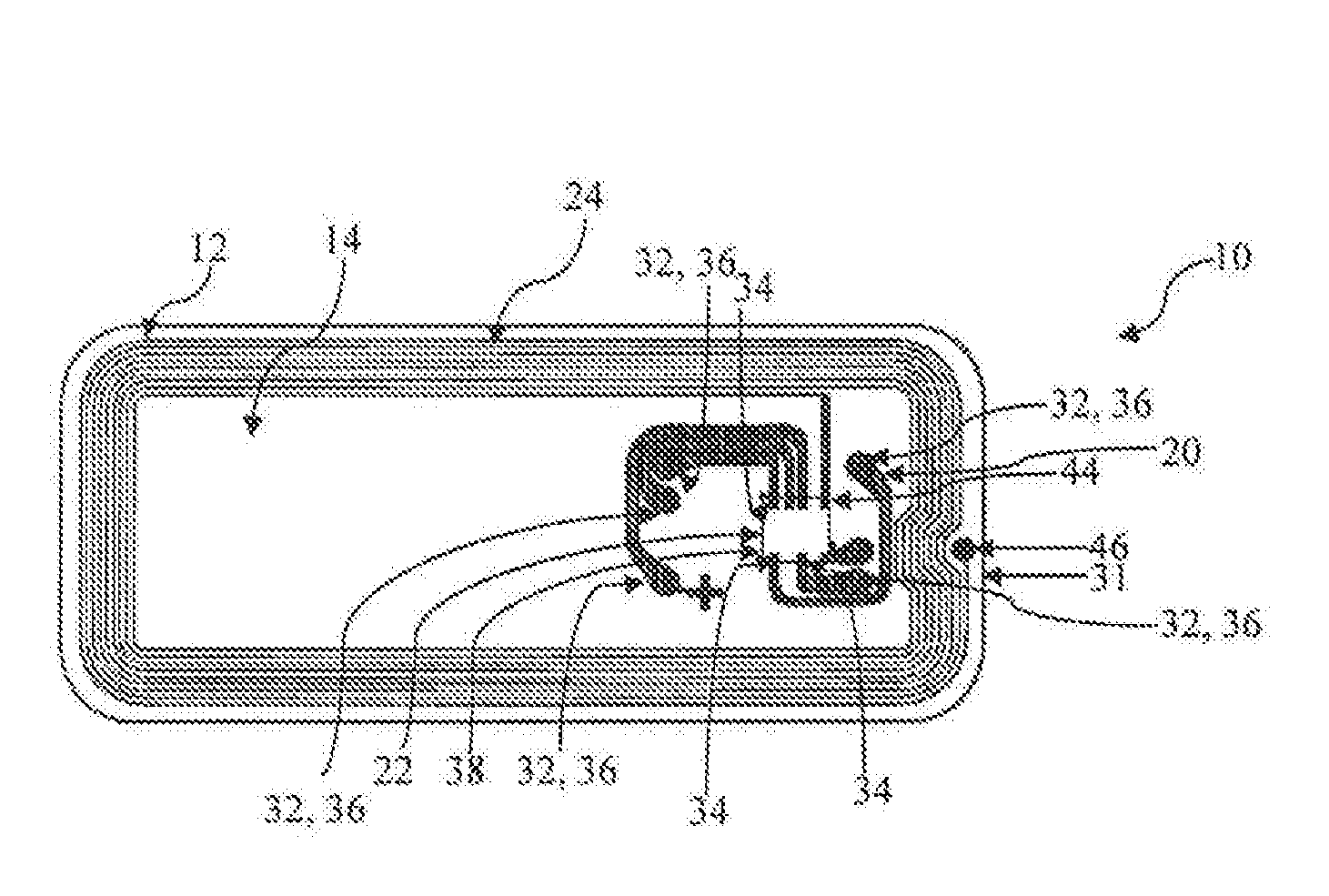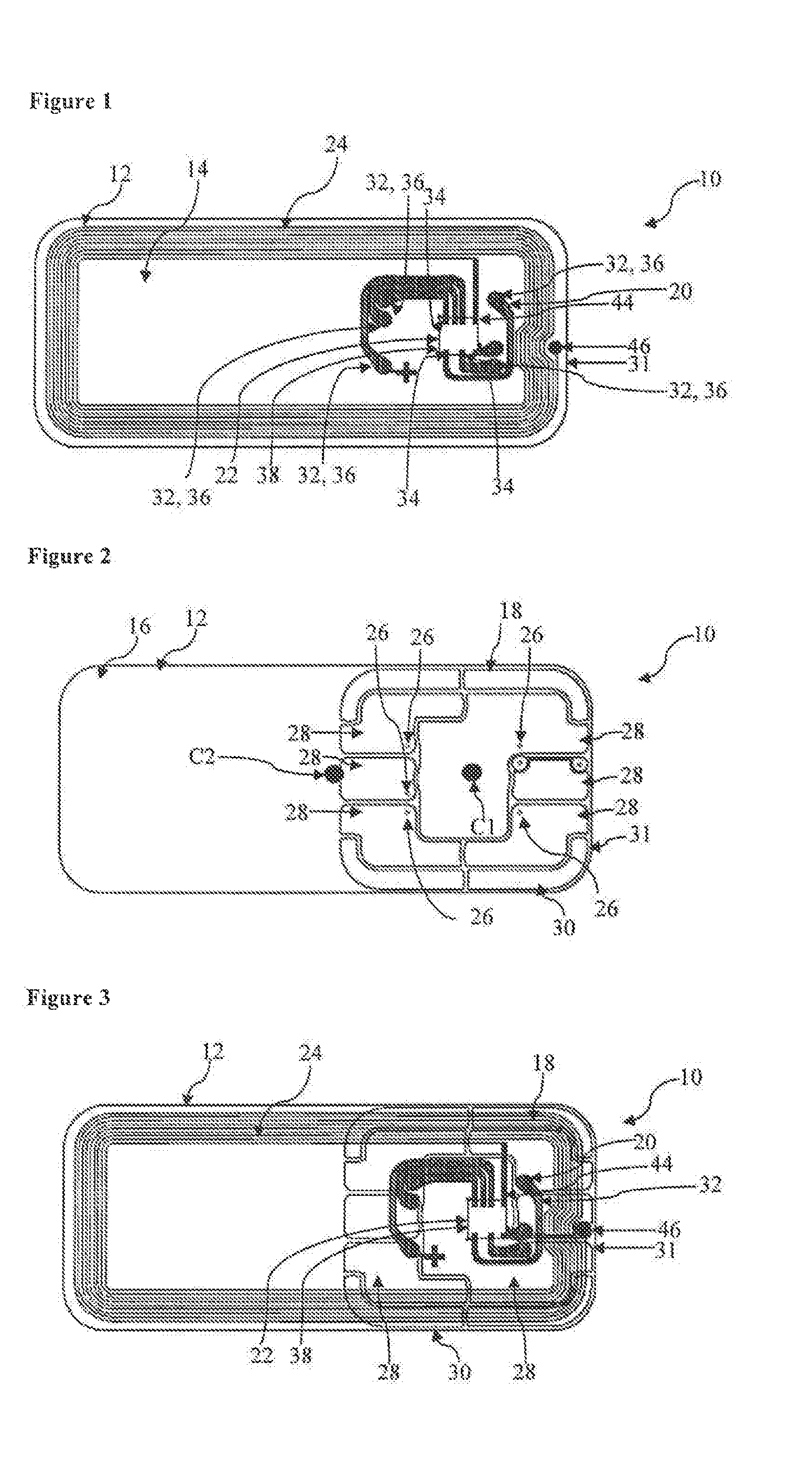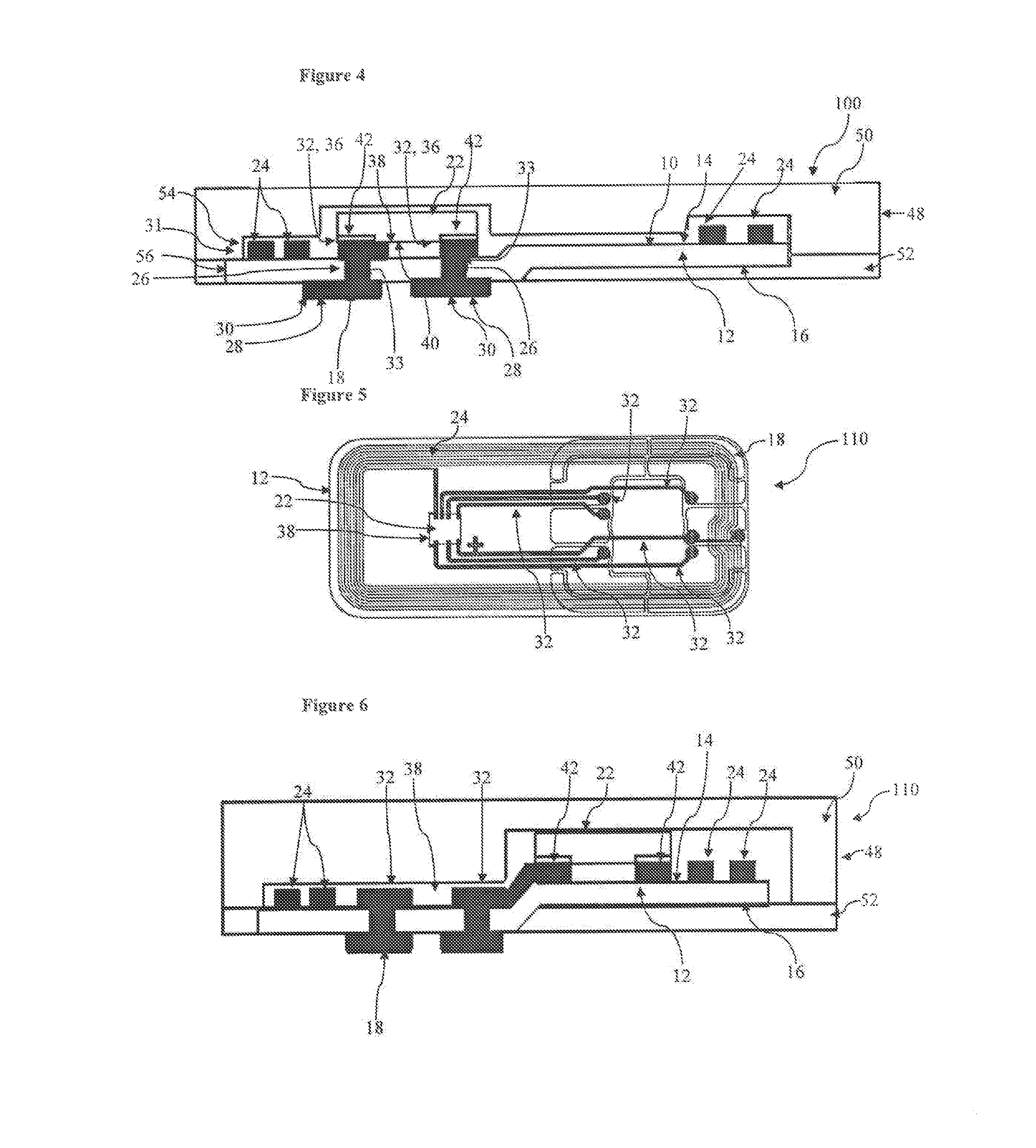Smart Card Module
a card module and card chip technology, applied in the field of smart card modules, can solve the problems of increasing manufacturing time and costs, complex electrical connection between the antenna and the chip, and failure of the connection, so as to improve the strength of the electromagnetic connection, increase the antenna length, and increase the thickness of the antenna
- Summary
- Abstract
- Description
- Claims
- Application Information
AI Technical Summary
Benefits of technology
Problems solved by technology
Method used
Image
Examples
first embodiment
[0044]Referring firstly to FIGS. 1 to 4, there is shown an embedded smart card module 10 forming part of a dual-interface smart card, such as a bank card, identification card, health card, SIM card or any other similar dual-interface device. The smart card module 10 comprises an extended or elongated circuit substrate 12 having a first side or surface 14 and an opposing second side or surface 16, which are preferably planar. A card-reader contact element 18 is mounted to the second side 16 of the circuit substrate 12.
[0045]An integrated circuit contact element 20 is in electrical communication with the card-reader contact element 18, through the circuit substrate 12. The integrated circuit contact element 20 defines a connection area at one end for mounting to the first side 14 of the circuit substrate 12 an integrated circuit, in the form of a chip 22. At the other end, the integrated circuit contact element 20 passes through via holes 26 to connect with the card-reader contact ele...
second embodiment
[0073]The second embodiment has the added advantage of offsetting the chip 22 from the card-reader contact element 18, so that in the event the card-reader contact element 18 is deformed by impact during insertion of the smart card 110 into the card reader, the connection between the card-reader contact element 18 and the chip 22 remains unaffected.
[0074]Shown in FIGS. 7 to 10 is the third embodiment of the smart card module 210. This embodiment is substantially identical to that of the first embodiment, except that the antenna coil 224 does not extend around the whole circumferential perimeter of the elongated circuit substrate 12. Instead, the antenna coil 224 is provided entirely offset from the card-reader contact element 18.
[0075]Each turn of the antenna coil 224 in this embodiment is therefore not as long as each turn of the antenna coil 24 of the first or second embodiments. However, as the whole of the antenna coil 224 is offset from the card-reader contact element 18, inter...
sixth embodiment
[0080]Alternatively, a capacitor 560 may be provided integrally with the circuit substrate 12, as shown in the smart card module 510 in FIG. 13. Such a substrate capacitor 560 may function identically to the separate component capacitor 60, shown in FIG. 12, and advantageously boosts the performance of the antenna coil 24.
[0081]In this embodiment, the substrate capacitor 560 is provided offset from the card-reader contact element 18 and integrated circuit 22, and is connected in parallel to the antenna 24 and chip 22 via a circuit contact member 32.
[0082]It will be appreciated that the capacitor 60, 560 may be positioned in a variety of positions about the substrate 12, the embodiments shown in FIGS. 12 and 13 being just two examples thereof. The capacitor 60, 560 may be positioned on either side 14, 16 of the substrate 12, adjacent to the card-reader contact element 18, or offset from the card-reader contact element 18.
[0083]Alternatively or additionally, one or more said capacitor...
PUM
 Login to View More
Login to View More Abstract
Description
Claims
Application Information
 Login to View More
Login to View More - R&D
- Intellectual Property
- Life Sciences
- Materials
- Tech Scout
- Unparalleled Data Quality
- Higher Quality Content
- 60% Fewer Hallucinations
Browse by: Latest US Patents, China's latest patents, Technical Efficacy Thesaurus, Application Domain, Technology Topic, Popular Technical Reports.
© 2025 PatSnap. All rights reserved.Legal|Privacy policy|Modern Slavery Act Transparency Statement|Sitemap|About US| Contact US: help@patsnap.com



